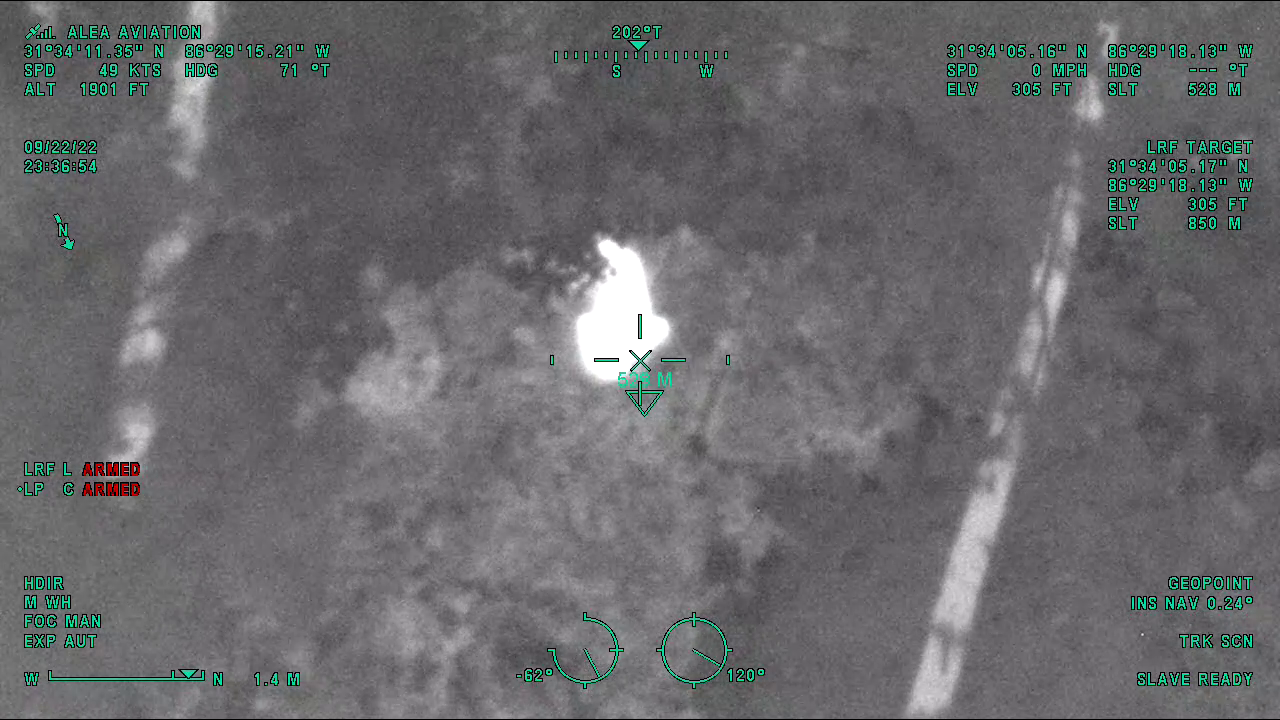By DAVID RAINER, Alabama Department of Conservation and Natural Resources
Thanks to the combined efforts of the Alabama Department of Conservation and Natural Resources’ Wildlife and Freshwater Fisheries (WFF) Division, the Crenshaw County Sheriff’s Office, Alabama Law Enforcement Agency (ALEA) and hunting club members, Jerrell Gordon is recovering from an ordeal that left him within hours of death.
WFF Conservation Enforcement Officer Brad Gavins received a call about 10 p.m. on September 23 from Crenshaw County 911 requesting assistance to locate a lost person on the Happy Hollow Hunting Club. Gavins was able to determine that the 79-year-old Gordon had gone to the hunting club to refill his deer feeders and had not responded to phone calls from his wife, Glenda, and was obviously overdue.
“The area has very poor cell service,” Gavins said. “It’s an extremely remote area. The only place you could get any cell service was at the hunting club’s meeting area. Normally, he would eat lunch in that area and give his wife a call.”
When that call didn’t come and it got dark, Mrs. Gordon contacted some of the fellow hunting club members, who were able to locate his truck and empty ATV trailer. With no sign of Gordon, 911 was contacted and asked for K-9 assistance. Gavins has two tracking dogs, Panda and Bella, but he decided later not to deploy the dogs.
“It had rained that afternoon and rain had covered the 4-wheeler tracks,” Gavins said. “The first thing we had to do was locate his ATV. And when we did, it might be too old of a track for the K-9s to be effective. After some discussion, I thought we should get ALEA Aviation involved with their thermal imaging.”
Gavins said the hunting club members stayed in the meeting area to keep from contaminating the search area, and one member knew about a stand where Gordon liked to hunt. The ATV was located at that spot with a bucket of corn that had obviously been there before the rain.
When ALEA Aviation’s helicopter arrived on the scene, Gavins radioed the ATV’s coordinates, and the air search began.
“We all stayed together until the helicopter search was complete,” he said. “We then did a grid search in the area and couldn’t locate Mr. Gordon” he said. “We waited to go to another area to allow ALEA Aviation to search without any other heat signatures. In an area outside the area where we thought he would be, ALEA Aviation located a heat signature.
“Just before we got to the heat signature, which was in a really thick place and there really wasn’t a reason for Mr. Gordon to be there, we saw a five-gallon bucket. Just past it was an area where the briers and brush were kind of laid down. ALEA Aviation directed us to the spot, and we saw Mr. Gordon lying there.”
ALEA Aviation Tactical Flight Officer Wayne Barlow was managing the helicopter’s FLIR (Forward Looking InfraRed) with Pilot David Williams at the helicopter controls. Barlow said it was the joint training with WFF and local law enforcement that led to a successful rescue of Gordon.
“We’ve done a lot of training on the Garmin DriveTrack system,” Barlow said. “Brad was able to vector us in to where they were from about 8 miles out using that Garmin DriveTrack. Once we got on scene, we established where they (the searchers) were at the spot where they found the 4-wheeler.”
Of course, the heat signatures from wild animals can complicate the search, but ALEA Aviation’s cutting-edge technology helped.
“When I see deer or possums, I have to zoom in and sort it out,” Barlow said. “Sometimes we have to make a couple of orbits before I get enough details to determine what it is. I had cleared the area around his hunting stand, and we moved on to another area. I picked up a couple more deer.
“Then I picked up a little tiny speck and zoomed in on it. As we made the turn, I could see it better, and it didn’t really look like a deer. But the way he was lying, he did not have the definition to say that it was a person. He was lying face down with his arms under him and his legs were to the side.”








